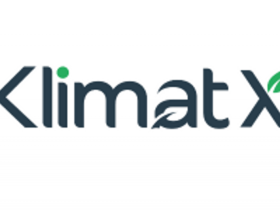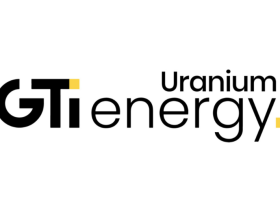The S&P/TSX Venture Composite Index (INDEXTSI:JX) moved up last week, increasing 1.75 percent to close at 625.47.
The US Federal Reserve was in focus during the period as its latest two day meeting took place. The central bank hiked interest rates by 25 basis points to a range of 5.25 to 5.5 percent, the highest level seen in 22 years. Although the gold price rose as high as US$1,980 per ounce after the Fed’s move was announced, it closed last week just below US$1,955.
Against that backdrop, a variety of TSXV-listed resource stocks made moves over the last five days. Read on to find out which companies rose the most during the period and what was affecting their share prices.
1. Juggernaut Exploration (TSXV:JUGR)
Weekly gain: 35.48 percent; market cap: C$13.43 million; current share price: C$0.21
Juggernaut Exploration is an exploration company with three projects in the Golden Triangle of BC, Canada: the Midas gold property, the Bingo gold property and the Empire polymetallic property.
On July 18, Juggernaut announced the beginning of a 4,500 meter drill campaign at Midas. Additionally, President and CEO Dan Stuart said exploration at drilling at Bingo and Empire were imminent. Grab samples from outcropping at Empire previously returned grades of up to 36,875 grams per metric ton (g/t) silver and 16.4 g/t gold.
While the company didn’t release news last week, its share price climbed throughout the period to reach a weekly peak of C$0.225 during trading hours on Friday (July 28).
2. Visionary Metals (TSXV:VIZ)
Weekly gain: 35.29 percent; market cap: C$15.78 million; current share price: C$0.115
Visionary Metals changed its name from Visionary Gold on July 10 to reflect its new focus on battery metals following a nickel-cobalt discovery at its King Solomon project in Wyoming, US.
Visionary’s most recent news came on July 19, when it announced a Q4 4,500 meter drilling program at King Solomon to expand on the nickel sulfide discovery, which the company said may be “the first new nickel sulfide discovery in the continental western United States since the early 1940s.” It also staked new claims at King Solomon and the nearby Tin Cup prospect.
The company’s share price climbed to a high of C$0.145 during trading last Thursday (July 27).
3. Omineca Mining and Metals (TSXV:OMM)
Weekly gain: 33.33 percent; market cap: C$14.24 million; current share price: C$0.08
Gold company Omineca Mining and Metals is exploring and mining underground placer gold at its Wingdam project in BC’s Lightning Creek area alongside its joint venture partner Hamilton Gold Royalties. Wingdam encompasses over 600 square kilometers and more than 15 linear kilometers of placer claims.
Underground mine haulage drifts are currently being developed to allow for access to the placer gold deposits. In March, Hamilton Gold Royalties and mining contractor Fortis Mining Engineering and Manufacturing “successfully entered the placer gold bearing paleochannel at the Wingdam underground project.”
The company’s most recent news came on July 21, when Omineca provided an update on the work at Wingdam, including the successful extension of the haulage drift and completion of an access drift. Additionally, Hamilton processed waste rock material from the haulage drifts and recovered 11 ounces of coarse placer gold flakes and a 1.13 ounce gold nugget.
Omineca’s share price rose to a weekly high of C$0.085 last Wednesday (July 26).
4. Founders Metals (TSXV:FDR)
Weekly gain: 33.33 percent; market cap: C$13.61 million; current share price: C$0.06
Founders Metals is focused on its gold projects in South America’s Guiana Shield, particularly its Antino project in Suriname. The company is currently in the middle of its 2023 exploration program at Antino, which is aimed at expanding high-grade historical gold zones within the Main Antino shear corridor and nearby high-priority targets.
Last Thursday, Founders released “exceptional” early results from its drilling at Antino’s Froyo zone. The assays confirm high-grade gold mineralization at Froyo with highlights of 29.9 g/t gold over 3 meters within 19.22 g/t gold over 12 meters. The company’s share price jumped following the news, peaking at C$0.38 early last Friday.
5. Solstice Gold (TSXV:SGC)
Weekly gain: 28.57 percent; market cap: C$10.26 million; current share price: C$0.045
Solstice Gold has a portfolio of projects in Canada, including the Red Lake Extension gold project, the Atikokan gold project and the Stewart Lake lithium project in Ontario, and the Qaiqtuq gold project in Nunavut. The company established Stewart Lake in February through staking and acquiring a 187 square kilometer land position, which it believes is prospective for lithium and rare earths.
Solstice announced a flow-through share and unit financing on July 18 for C$420,000, the majority of which it plans to use for grassroots lithium exploration at Stewart Lake. The company’s share price rose throughout last week to peak at C$0.055 during trading on both Thursday and Friday.
FAQs for TSXV stocks
What is the difference between the TSX and TSXV?
The TSX, or Toronto Stock Exchange, is used by senior companies with larger market caps, while the TSXV, or TSX Venture Exchange, is used by smaller-cap companies. Companies listed on the TSXV can graduate to the senior exchange.
How many companies are listed on the TSXV?
As of April 2023, there were 1,713 companies listed on the TSXV, 953 of which were mining companies. Comparatively, the TSX was home to 1,789 companies, with 190 of those being mining companies.
Together the TSX and TSXV host around 40 percent of the world’s public mining companies.
How much does it cost to list on the TSXV?
There are a variety of different fees that companies must pay to list on the TSXV, and according to the exchange, they can vary based on the transaction’s nature and complexity. The listing fee alone will most likely cost between C$10,000 to C$70,000. Accounting and auditing fees could rack up between C$25,000 and C$100,000, while legal fees are expected to be over C$75,000 and an underwriters’ commission may hit up to 12 percent.
The exchange lists a handful of other fees and expenses companies can expect, including but not limited to security commission and transfer agency fees, investor relations costs and director and officer liability insurance.
These are all just for the initial listing, of course. There are ongoing expenses once companies are trading, such as sustaining fees and additional listing fees, plus the costs associated with filing regular reports.
How do you trade on the TSXV?
Investors can trade on the TSXV the way they would trade stocks on any exchange. This means they can use a stock broker or an individual investment account to buy and sell shares of TSXV-listed companies during the exchange’s trading hours.
Data for 5 Top Weekly TSXV Performers articles is retrieved each Friday after market close using TradingView’s stock screener. Only companies with market capitalizations greater than C$10 million prior to the week’s gains are included. Companies within the non-energy minerals and energy minerals are considered.
Securities Disclosure: I, Lauren Kelly, hold no direct investment interest in any company mentioned in this article.
Securities Disclosure: I, Charlotte McLeod, hold no direct investment interest in any company mentioned in this article.





